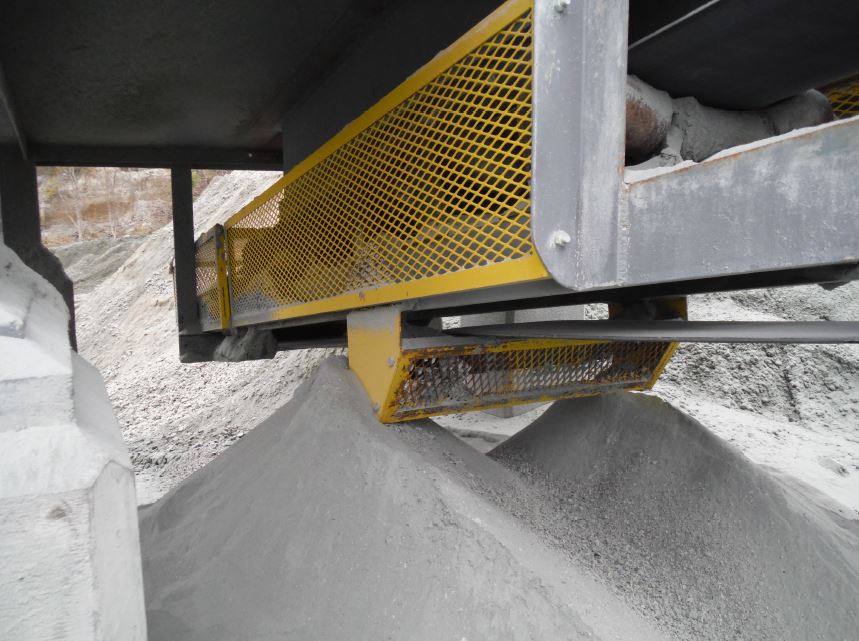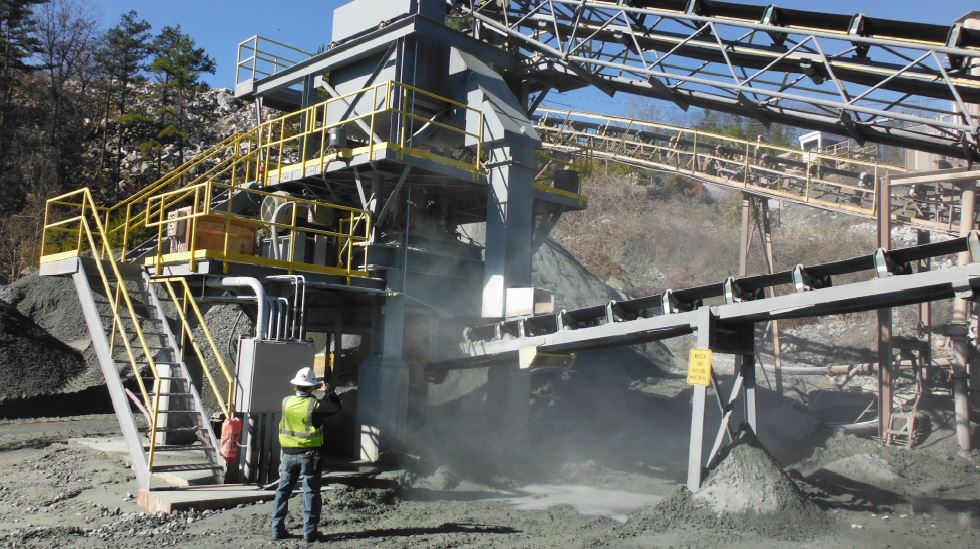Resources
| PDF - Printable Version of Case Study | Download |
| Solutions | Installation |
|---|---|
| Industry | Quarrying |
| Customer | Quarry in Southeastern US |

Spillage and dust were becoming constant sources of concern and burden for this Southeastern plant. Their existing transfer chute was not designed within Conveyor Equipment Manufacturers Association (CEMA) specifications and therefore was causing excessive material spillage and airborne dust. Handling 20,000 Tons of crushed rock per month put them at huge risk for material and profit loss. The plant estimated they were losing several thousands of dollars in labor expenses every week! Cleanup was not only an expensive maintenance task but also a dangerous one. Airborne dust can garner negative attention from regulatory agencies and lead to fines. Looking for a cleaner and safer solution to their dust and spillage problems, the plant contacted Martin Engineering.

Martin Engineering recommended a complete redesign of the transfer point to accommodate the necessary equipment. The chute was installed from the crusher to the belt. Belt support systems were added so the wear liner could be as close to the belt as possible and within CEMA specifications, ensuring elimination of spillage and reduction of dust from the generated and displaced air from the secondary cone crusher. Martin installed belt sealing systems due to the sloped chutes from the crusher to the conveyor. Martin provided belt alignment and tail protection solutions to keep the belt from wandering and to prevent damage to the belt and tail pulley. The plant provided the material and labor for the chute redesign while Martin supplied installation supervision and the equipment upgrades.

The quarry foreman is extremely happy with how the transfer point and system upgrades turned out. In fact, they turned out so well that there is no visible dust in sight. One of the loader operators noticed that the crusher went down. Upon inspection, he learned that the crusher was operating fine but that since there was no visible dust, the crew thought it was down. Prior to the upgrades, the loader operators used to verify that the crusher was working because of the presence of dust. By eliminating the need for manual cleanup, the plant has provided a safer environment for its workers. Martin outlined a second phase of solutions/upgrades to further reduce dust if needed.
| PDF - Printable Version of Case Study | Download |

While your problem seems unique and frustrating, with 70+ years of solving similar problems around the world, and with the most experienced and educated people on our teams, we can assure you that we’ve “Been There, Done That.” At least close enough to know what needs to be done next and adjust for your situation.
Put Us To The Test For Free! Let Us Give You a Solution.